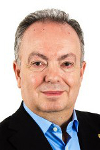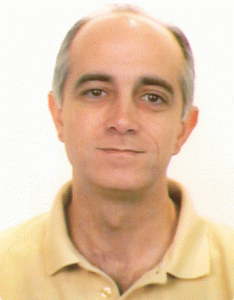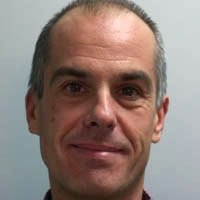Francisco José Quiles Flor

With more than twenty-five years of experience in computer architecture and a degree in Physics (Specialization in Computer Science and Electronics) from the University of Valencia in 1986, I obtained a doctorate in Physical Sciences from the Department of Informatics of the University of Valencia in 1993. In 1987 I joined the Department of Computer Systems at the University of Castilla-La Mancha, where I am currently Professor of Architecture and Computer Technology.
José Francisco Duato Marín

Jose Duato received the MS and PhD degrees in electrical engineering from the Technical Univer- sity of Valencia, Spain, in 1981 and 1985, respectively. Currently, Dr. Duato is Professor in the Department of Computer Engineering (DISCA), and was an adjunct professor in the Department of Computer and Information Science, The Ohio State University (1999-2000).
Prof. Duato’s current research interests include interconnection networks, on-chip networks, and multicore and multiprocessor architectures. Prof. Duato has published over 500 refereed papers. According to Google Scholar, his publications received more than 13,000 citations, has an h-index of 53, and an i10-index of 238. He proposed a powerful theory of deadlock-free adaptive routing for wormhole networks. Versions of this theory have been used in the design of the routing algorithms for the MIT Reliable Router, the Cray T3E supercomputer, the on-chip router of the Alpha 21364 microprocessor, and the IBM BlueGene/L supercomputer. Prof. Duato also developed RECN, a scalable congestion management technique, and a very efficient routing algorithm for fat trees that has been incorporated into Sun Microsystem’s 3456-port InfiniBand Magnum switch. Prof. Duato led the Advanced Technology Group in the HyperTransport Con- sortium, and was the main contributor to the development and standardization of an extension to HyperTransport (High Node Count HyperTransport Specification 1.0). Prof. Duato also led the development of rCUDA, which enables remote virtualized access to GP-GPU accelerators using a CUDA interface.
Prof. Duato is the first author of the book Interconnection Networks: An Engineering Approach. This book was co-authored by Prof. Sudhakar Yalamanchili, from Georgia Institute of Technol- ogy, and Prof. Lionel Ni, from Michigan State University. It was published by IEEE Computer Society Press in 1997, and for many years it has been the reference book on interconnection networks. The revised printing edition of this book has been published by Morgan Kaufmann in 2003. Prof. Duato is also a co-author, together with Prof. Timothy Pinkston, from University of Southern California, of the appendix on interconnection networks in the fourth and fifth edi- tions of the book Computer Architecture: A Quantitative Approach, by John Hennessy and David Patterson.
Prof. Duato served in the editorial boards of IEEE Transactions on Parallel and Distributed Sys- tems, IEEE Transactions on Computers, and IEEE Computer Architecture Letters. He served as Co-Chair, member of the Steering Committee, Vice-Chair, or member of the Program Committee in more than 60 conferences, including the most prestigious conferences in his field (HPCA, ISCA, IPPS/SPDP/IPDPS, ICPP, ICDCS, Europar, HiPC).
Prof. Duato was awarded with the National Research Prize in 2009 and the “Rey Jaime I” Prize in 2006, delivered by the King and the Queen of Spain, respectively.
Manuel Eugenio Acacio

I obtained the title of Computer Engineer by the University of Murcia in 1998. From then on I started with the completion of my doctoral thesis, at the same time as I was teaching Assistant Professor in the Department of Engineering and Computer Technology of said college. In March 2003 I defended my doctoral thesis, focused on the design of cache coherence protocols in scalable shared memory multiprocessors, obtaining the prize for the best doctoral thesis in Computer Science at the University of Murcia in the year 2004. Of this thesis they were Several scientific articles, published in prestigious international conferences of the area (among them HPCA, PACT and Supercomputing, an article in each one) and international journals (2 articles published in IEEE TDPS magazine, Q1). In 2002 I was hired for 2 months as a summer intern at the prestigious IBM TJ Watson Research Center, Yorktown Heights (NY) United States.
Juan Manuel Orduña Huertas

